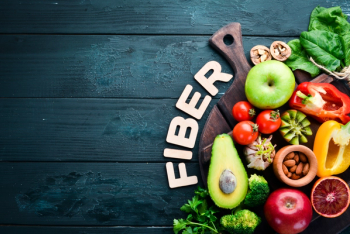
- Nutritional Outlook Vol. 17 No. 4
- Volume 17
- Issue 4
Tapioca Syrup is a Corn Syrup Replacer
With some consumers avoiding corn ingredients, tapioca syrup has much to gain.
For decades, corn has jam-packed the North American food space, especially as a sweet syrup. But tapioca syrup is quickly stealing some of corn’s business. Despite corn’s historical versatility as food, feed, and even biofuel-and the federal subsidies that make U.S. corn production so cheap-much of today’s maize is genetically modified. Understandably, a lot of manufacturers and consumers are not stoked about this.
Fortunately for everyone, tapioca syrup can be a one-to-one corn syrup replacer, and it’s not genetically modified. Since, in many applications, tapioca syrup and corn syrup can be used interchangeably, let’s familiarize ourselves with the non-native tapioca syrup.
Sourcing and Production
The source of tapioca syrup is cassava, or manioc. A brown-skinned tuberous root that grows in parts of Asia, Africa, and South America, cassava is plucked from the ground, ground into starch, and then, with the helpful use of acid hydrolysis or modern-day enzymes, broken down further into syrup. The resulting syrup is sweet, but only because of this final stage of processing.
“Starch has no sweetness value,” says James Morano, PhD, vice president of new products and business development for
Suzanne’s Specialties (New Brunswick, NJ), a supplier of tapioca syrup and other natural sweeteners. “All of the sites that would give you sweetness are tied up in that large starch molecule. The starch molecule is basically a polymer of tens of thousands of monomers, but they’re all tied together in such a way that the sweetness is gone.”
Once the large starch molecules are broken down into polymers, the taste of cassava is, at last, quite sweet. But it can be variable. The longer the hydrolysis takes place, the sweeter the syrup. Particular sweetness is measured as DE (dextrose equivalent) levels.
Range and Function
DE levels for tapioca and other starch-based syrups can range from the low 20s (anything lower, FDA says, is maltodextrin) to the 90s (a DE100 would just be dextrose). Everything in between is made possible through highly technical expertise in enzymatic hydrolysis.
“It’s like you’re a conductor of the symphony,” says Prescott Bergh, director of marketing and sales for Ciranda Inc. (Hudson, WI), another syrup supplier. “Each enzyme is playing a different instrument, and you have to give it its time to work.”
Tapioca syrups, depending on their DE levels, will have different functions in foods and beverages. Low-DE syrups are highly viscous, which gives them good binding properties (say, in a granola bar or cereal cluster), but they lack considerable sweetness. Meanwhile, high-DE syrups are very sweet, but their reduced viscosity makes them poor binders.
The DE level and overall sugar profile of a tapioca syrup can influence multiple other factors, such as crystal control in ice cream, crunch of a bar, body of a baked good, and thickness of a sauce. Manufacturers should consult with syrup suppliers to find a syrup that meets their particular desires.
Color and Form
Choosing the appropriate syrup color is another option for buyers. When syrup sugars are heated, a Maillard reaction, or browning of the sugar, occurs. This can be accompanied by a noticeable caramel flavor, too.
Higher DE levels will impart more of this browning, but some processors can still offer clear, high-DE tapioca syrups. A lighter color may be prefereable in applications where weak, non-synthetic colors are relied upon. Tan, browner syrups will, of course, have their own uses, too.
Although syrups are known for their usual liquid formats, today’s suppliers make these ingredients available as powdered solids, too. Syrup solids hold up better in dry mixes such as flours or cake mixes, where spraying syrup would likely result in clumping.
Rice Syrup
While tapioca is a viable alternative to corn syrup, it isn’t the only one. Rice syrup, in fact, shares many of the same sweet qualities.
“If you compare a DE42 rice syrup, a DE42 corn syrup, and a DE42 tapioca syrup, you’re going to get the same situations,” says Joe Hickenbottom of Malt Products Corp. (Saddle Brook, NJ). “Solids, viscosity, sweetness, adaptability, and use-they’re so similar across the three syrups that you really can’t tell the difference.”
As rice syrup continues to become a more domestic crop in North America, usage of this syrup will continue to grow with that of tapioca. Will corn rebound and share in that bright future?
Associate Editorâ¨
Nutritional Outlook magazineâ¨
robby.gardner@ubm.com
Articles in this issue
over 11 years ago
Food and Drinks for Bone and Joint Healthover 11 years ago
Blood Pressure and Dietary Supplementsover 11 years ago
Omega-3 for Brain Health, Sleep, and Critically Ill Patientsover 11 years ago
Insider Tips on Formulating Functional Foodsover 11 years ago
How to Source Non-GMO Ingredients and Suppliersover 11 years ago
Should Gummy Manufacturers Use Gelatin or Pectin?over 11 years ago
When will FDA release revised NDI draft guidance?over 11 years ago
How to Create Ingredient Monographsover 11 years ago
FDA, Social Media, and Health Claimsover 11 years ago
Minerals in Ancient Grains Are Celiac-FriendlyNewsletter
From ingredient science to consumer trends, get the intel you need to stay competitive in the nutrition space—subscribe now to Nutritional Outlook.





